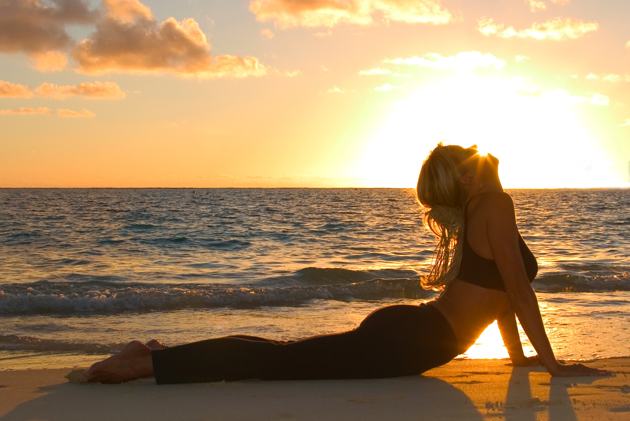Stress is unavoidable and in fact it is necessary for life. You need stress for creativity, learning, and your very survival on a day-to-day basis. Stress is only harmful when it becomes overwhelming and interrupts the healthy state of equilibrium that your nervous system needs to remain in balance. Unfortunately, overwhelming stress has become an increasingly common characteristic of contemporary life. When stressors do give your nervous system a jolt, relaxation techniques can bring it back into a balanced state by producing the relaxation response, a state of deep calmness that is the polar opposite of the stress response.
"The Relaxation Response" a best-selling book written by Harvard physician Herbert Benson. "The Relaxation Response" is a simple version of Transcendental Meditation. The book has been widely recommended to patients by clinical psychologists. You can buy it here >>
Bringing Your Mind Back Into Equilibrium
When stress overwhelms your nervous system your body is flooded with chemicals that prepare you for “fight or flight”. While the stress response can be lifesaving in emergency situations where you need to act quickly, it wears your body down when constantly activated by the stresses of everyday life. The relaxation response puts the brakes on this heightened state of readiness and brings your body and mind back into a state of equilibrium.
Producing The Relaxation Response
A variety of different relaxation sequences can help you bring your nervous system back into balance by producing the relaxation response. The relaxation response is not lying on the couch or taking a nap, but is instead a mentally active process that leaves the body relaxed and calm, and the mind refreshed and focused.
Learning the basics of effective relaxation techniques isn’t difficult, but it does take practice. I recommend setting aside at least 10 to 20 minutes a day for your Yoga relaxation practice. If you’d like to get even more stress relief, aim for 30 minutes to an hour. If that sounds like a daunting commitment, remember that many of these techniques can be incorporated into or done before or after your existing Yoga practices.
Finding The Relaxation Sequences That Are Best For You
There is no single relaxation sequence that is best for everyone. When creating your own anti-stress session, consider your specific needs, preferences, fitness level, and the way you tend to react to stress. The right relaxation sequence is the one that resonates with you, fits into your schedule, and is able to focus your mind and interrupt your everyday thoughts in order to elicit the relaxation response. In many cases, you may find that alternating or combining different sequences will keep you motivated and provide you with the best results.
Lean On Yoga For Support
If there’s anything on the planet that is healthy to use as a crutch whenever you need it – it’s Yoga. Try creating a special routine that includes the asanas you find most comforting and that you enjoy performing. That makes your sequence not only effective at reducing your stress levels, but it also makes it something you’ll look forward to even on the most harrying of days.


